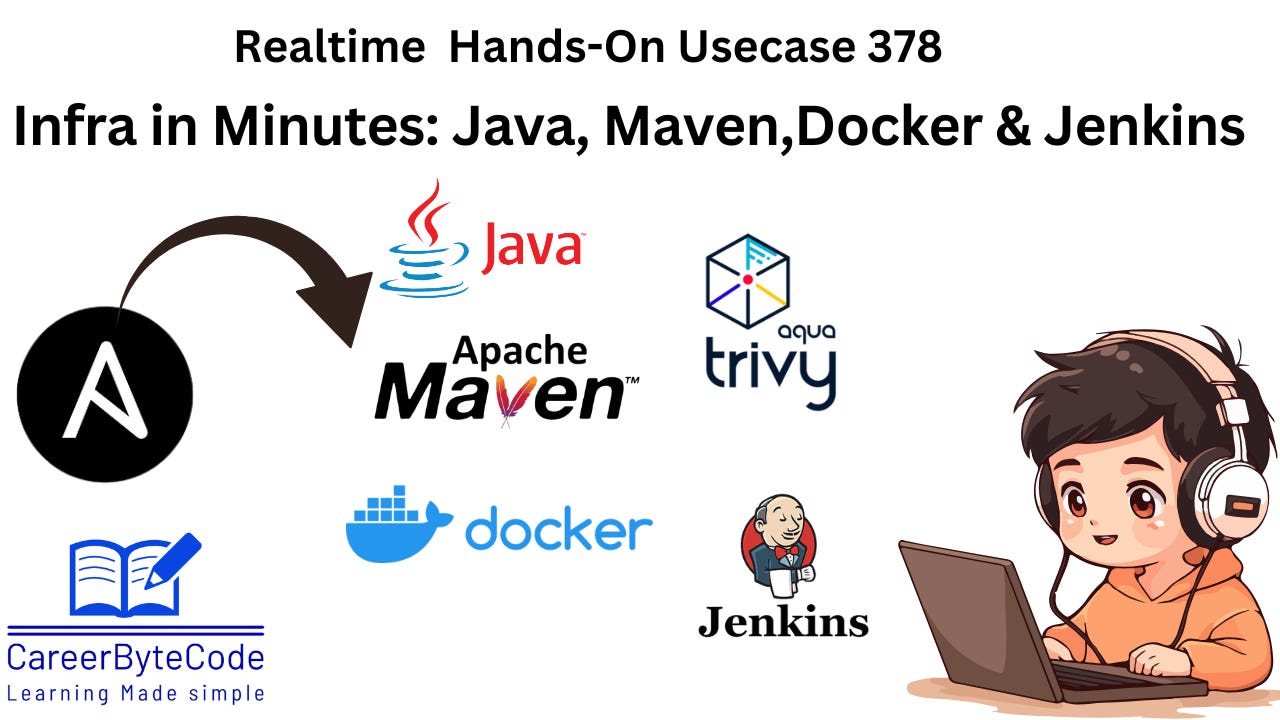Automate Everything: Install DevOps Tools (Java, Maven, Trivy, Docker, and Jenkins) on Linux with Ansible.
Automatically install Java, Maven, Trivy, Docker & Jenkins with smart reboot control.
1. Problem Statement
Setting up a consistent DevOps environment across multiple Linux machines is a critical task for ensuring productivity, stability, and standardization in modern software delivery pipelines. However, manually installing and configuring essential tools like Java, Maven, Trivy, Docker, and Jenkins on each server is time-consuming, error-prone, and difficult to scale.
Current Challenge:
DevOps tools must be installed uniformly across multiple machines (slaves).
Manual setup introduces inconsistency, delays, and configuration drift.
Scaling environments or onboarding new servers becomes inefficient.
Objective:
To automate the provisioning and installation of core DevOps tools across multiple Ansible-managed Linux nodes (slaves) using an Ansible controller, ensuring:
Consistency in versions and configurations.
Quick setup for new nodes or environments.
Repeatable, scalable, and reliable infrastructure automation.
This approach aligns with Infrastructure as Code (IaC) principles, enabling seamless, agentless automation that saves time, reduces errors, and accelerates environment readiness.
2. Why We Need This Use Case
In a DevOps environment, teams rely on consistent tooling across development, testing, and production systems. Manually configuring multiple Linux-based nodes with essential DevOps tools like Java, Maven, Trivy, Docker, and Jenkins is time-consuming, error-prone, and hard to replicate.
This use case solves that by using Ansible — a powerful, agentless automation tool — to automate the setup of all required tools across multiple nodes in a consistent, scalable, and repeatable way.
The automation ensures:
Uniform tool versions and configurations
Rapid onboarding of new machines
Infrastructure as Code (IaC) principles enforced
Minimized human errors and reduced downtime
This scenario is ideal for DevOps engineers, system administrators, or students setting up real-time labs or production-grade environments.
3. When We Need This Use Case
You need this use case when:
Setting up a DevOps lab with uniform configurations across multiple VMs or bare-metal servers
Building CI/CD environments that require tools like Jenkins, Docker, Maven, and Trivy pre-installed
Performing infrastructure provisioning using code (IaC approach)
Automating the setup of new Linux environments in cloud or on-premise systems
Delivering hands-on training or demos with identical server configurations for each student
4. Challenge Questions
Keep reading with a 7-day free trial
Subscribe to CareerByteCode’s Substack to keep reading this post and get 7 days of free access to the full post archives.




